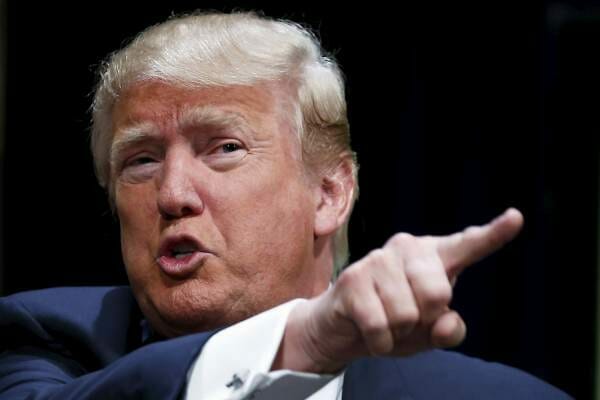Eric Thompson Show
Washington, D.C. — A coalition of influential conservative organizations has embarked on an ambitious plan to reshape the United States government according to the principles and vision articulated by former President Donald J. Trump. This strategy, which promises a dramatic overhaul of federal operations, is poised to play a pivotal role in the upcoming 2024 presidential election.
The blueprint, meticulously crafted by a consortium of conservative think tanks and advocacy groups, including the Heritage Foundation, aims to dismantle what they perceive as a bloated and overreaching federal bureaucracy. Proponents argue that this transformation is essential to restoring constitutional governance and reviving American exceptionalism.
“We need to flood the zone with conservatives,” said Paul Dans, director of the 2025 Presidential Transition Project and a former Trump administration official who speaks with historical flourish about the undertaking.
The goal is to avoid the pitfalls of Trump’s first years in office, when the Republican president’s team was ill-prepared, his Cabinet nominees had trouble winning Senate confirmation and policies were met with resistance — by lawmakers, government workers and even Trump’s own appointees who refused to bend or break protocol, or in some cases violate laws, to achieve his goals.
A Vision Rooted in Conservative Ideals
At the heart of this movement is a profound dissatisfaction with the current state of federal governance, which these groups argue has strayed far from the original intent of the Founding Fathers. The plan emphasizes reducing the size and scope of federal agencies, curtailing regulatory overreach, and enhancing executive power to ensure swift implementation of conservative policies.
“President Trump’s tenure highlighted the necessity of confronting the deep state and returning power to the people,” stated Kevin Roberts, president of the Heritage Foundation, in a recent interview. “This plan is not merely about efficiency; it is about safeguarding liberty and ensuring that the government serves the American citizen, not the other way around.”
With a nearly 1,000-page “Project 2025” handbook and an “army” of Americans, the idea is to have the civic infrastructure in place on Day One to commandeer, reshape and do away with what Republicans deride as the “deep state” bureaucracy, in part by firing as many as 50,000 federal workers.
Strategic Reforms and Institutional Overhaul
With a $100,000 grant from the Heritage Foundation, the goal is to post 100 names of government workers to a website this summer to show a potential new administration who might be standing in the way of a second-term Trump agenda — and ripe for scrutiny, reclassifications, reassignments or firings.
Key elements of the strategy include a comprehensive review and potential elimination of numerous federal agencies deemed redundant or counterproductive. The Environmental Protection Agency (EPA), the Department of Education, and the Internal Revenue Service (IRS) are among the institutions targeted for significant downsizing or restructuring.
Additionally, the plan advocates for a robust reassertion of executive authority. This would involve appointing staunchly conservative officials to key positions and streamlining the process for enacting executive orders. The objective is to create a more agile and responsive federal government that can promptly address national challenges without the inertia often associated with bureaucratic processes.
The Path Forward: 2024 and Beyond
As the 2024 election approaches, this plan is expected to be a central theme in conservative campaigning. Former President Trump, a likely contender, has expressed his support for these initiatives, framing them as a continuation of his efforts to “drain the swamp” during his first term.
“Trump’s return to the political arena symbolizes a resurgence of conservative values,” remarked a senior strategist involved in the plan. “This blueprint not only reflects his vision but also responds to the growing demand among voters for a government that prioritizes American interests above all.”
Criticism and Controversy
While the plan has garnered significant support among conservative circles, it has also sparked considerable debate. Critics argue that the proposed dismantling of federal agencies could lead to regulatory chaos and undermine essential public services. They contend that the emphasis on executive power risks creating an authoritarian governance model, diverging from democratic principles.
Nevertheless, proponents remain steadfast, citing the inefficiencies and perceived overreach of current federal structures as justification for bold reform. They emphasize that this strategy is about restoring a balance of power that has shifted too far towards unaccountable bureaucratic entities.
A Pivotal Moment in American Politics
This initiative represents a defining moment for the conservative movement. The upcoming election will serve as a referendum not only on Trump’s legacy but also on the broader vision for America’s future governance. As the nation stands at a crossroads, the debate over the size and role of government promises to be a central issue, influencing both policy and public sentiment.
In summary, the coalition’s plan to overhaul the federal government underscores a deep-seated desire among conservatives to reassert foundational American principles and adapt governance to the demands of the 21st century. Whether this vision will resonate with the broader electorate remains to be seen, but its impact on the political landscape is undeniable.
